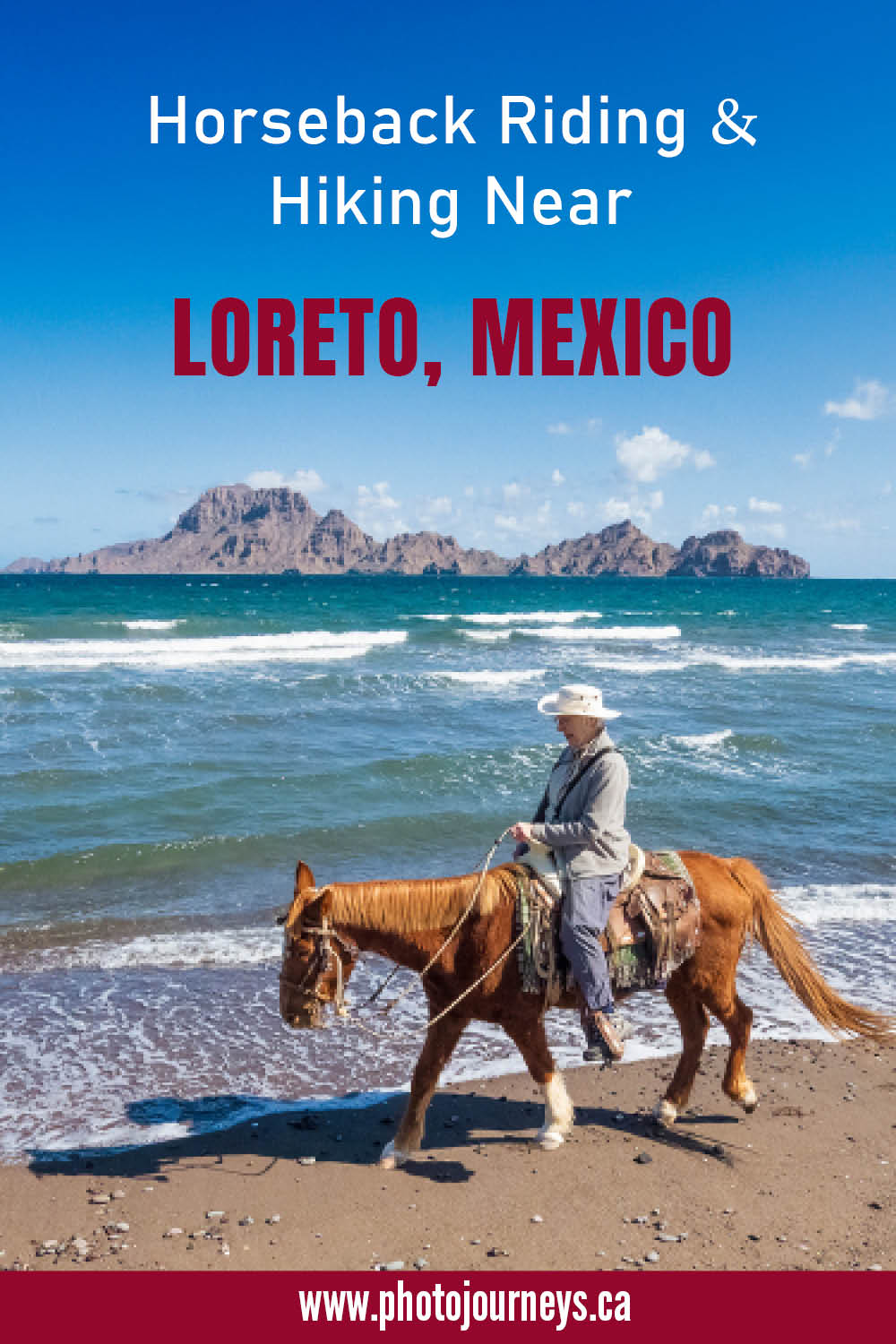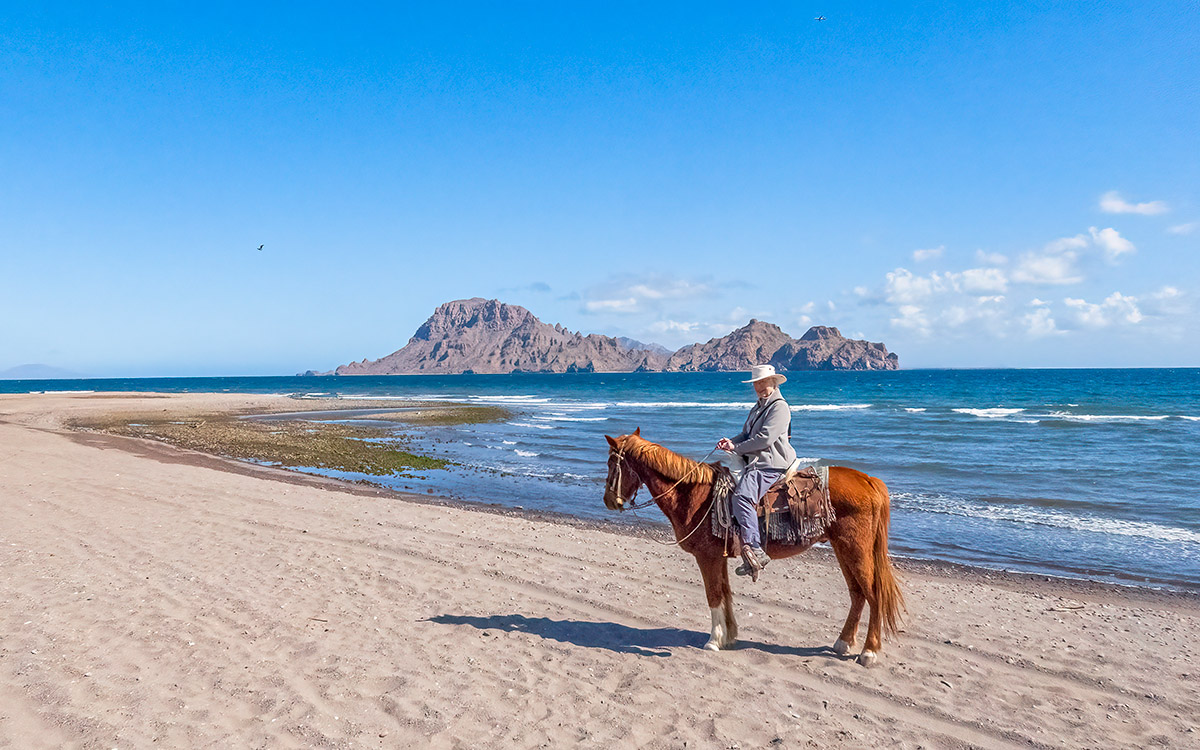
All photos © Robin and Arlene Karpan

Imagine horseback riding on a gorgeous beach with a backdrop of rugged mountains and desert islands. Or picture yourself wandering up an easy cactus-lined path to a peak with a 360-degree vantage point over the wild terrain. These are just two of the many outdoor adventures awaiting near Loreto in Baja California Sur, Mexico.
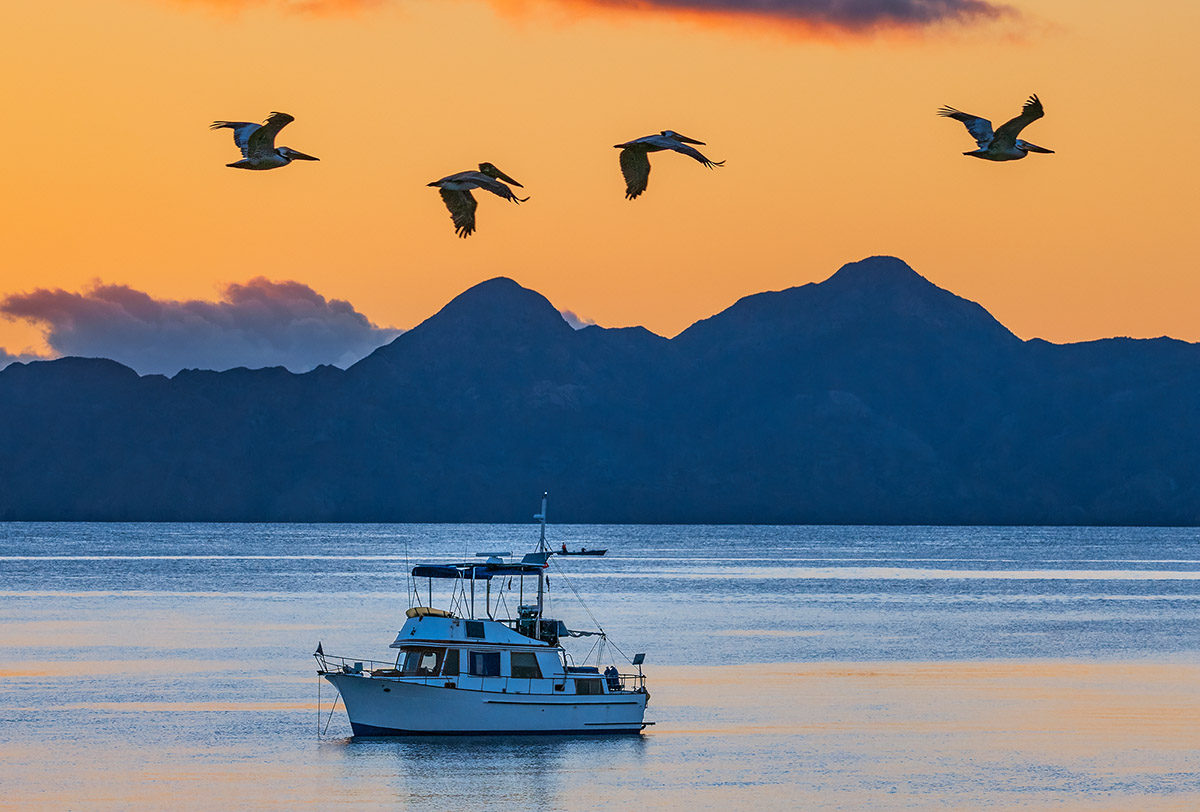
Beautifully situated in a protected bay in the Gulf of California, Loreto is a small, charming colonial city with a big reputation for nature-based tourism. It’s one of the world’s premier whale-watching destinations, a paradise for bird lovers, and a place where the desert meets the sea in spectacular fashion. The rich history takes us back to the beginnings of Spanish colonial expansion in this corner of North America. We’ve written about those attractions in earlier posts (see links at the end), so this time around we’re looking at riding and hiking.
Horseback Riding on the Beach
On a clear morning, our small group left Loreto, bound for the tiny village of Ligui, about 40 km south. The drive took around 45 minutes with a stop at one of the miradors or viewpoints with sweeping views of the huge bay.
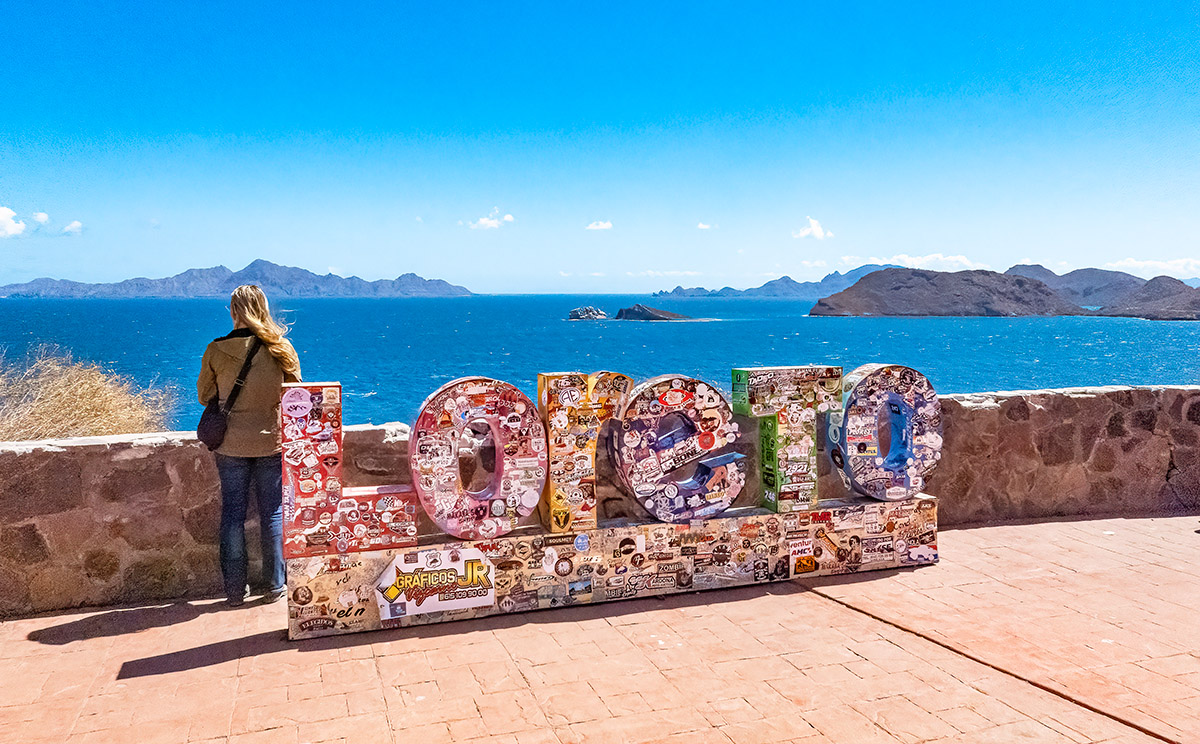
Before long, Mario Perez, our van driver and tour organizer, turned into a ranch on the south end of Ligui which is home to 200 or so residents. We had a quick look around the yard, with Mario telling us about the owner, also named Mario, who makes his own fine leather chaps and other horse-riding gear.

Nearby, our horses were being saddled. One was named Espresso, so we were expecting a caffeine-induced, high-spirited temperament. However, it was quite the opposite, with easy-going Espresso lagging at his own pace.
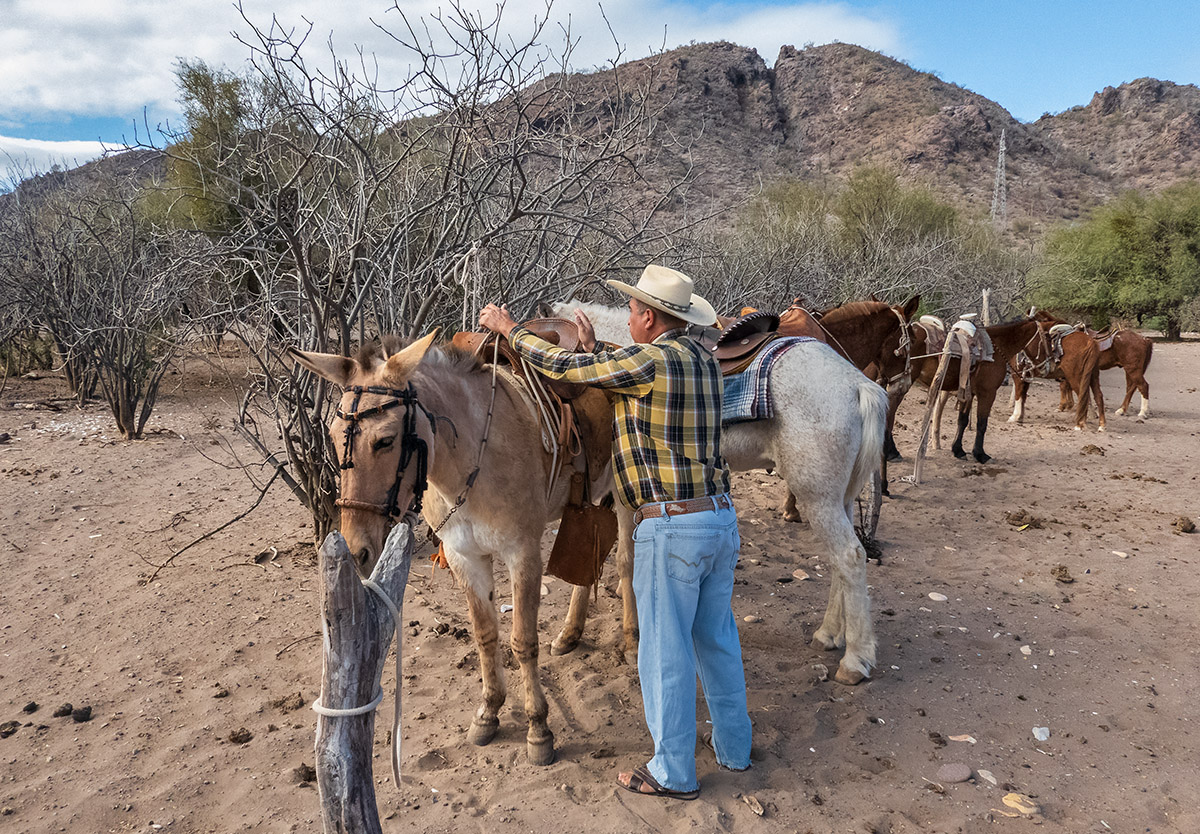
Leaving the ranch, we rode through a sandy trail with short, gangly trees, scratchy shrubs and cactus. If we stopped to take photos, the horses would walk over to a cactus, rubbing their bellies.
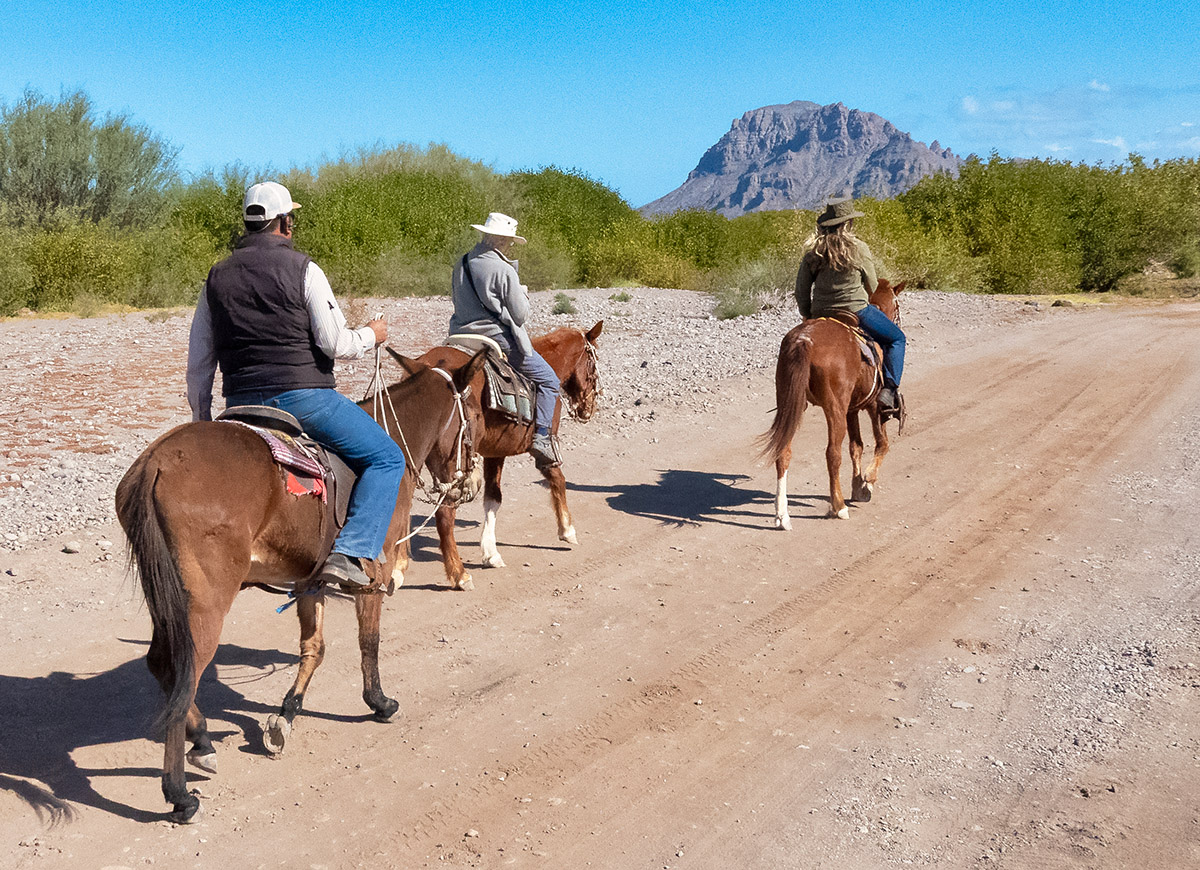
A few minutes later, we reached Ligui Beach, where the scene took us by surprise. Beautiful sand stretched as far as we could see. Gentle waves lapped along the shallow shoreline, although farther into the bay, strong winds had stirred up whitecaps. In the distance, high hills marked the end of the beach, and we could see some of the features along the coastline of Isla Dazante, a few kilometres offshore. It’s not unusual to see whales or dolphins along here, but not today with all of the whitecaps.
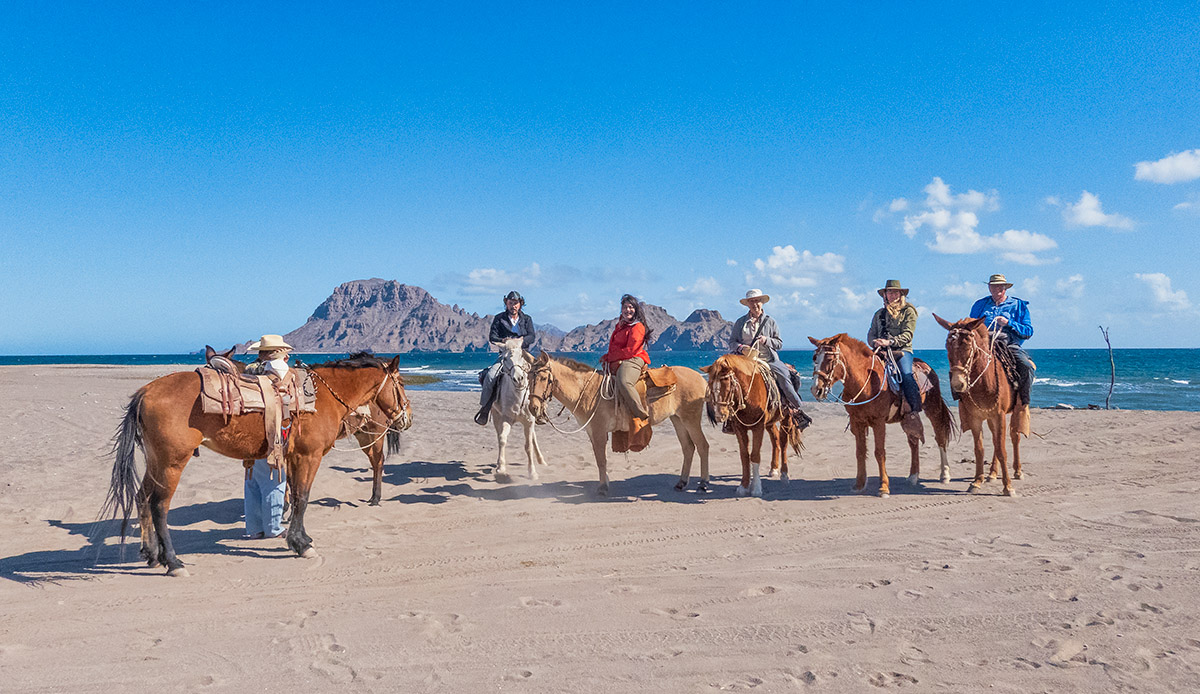
The time drifted by as we moved leisurely along the sandy beach, often coming across huge pieces of driftwood flung far up on the shore. Bleached pure white in the Baja sun, they served as a reminder of how powerful the waves can become. The horses seemed to enjoy the ride as well, their manes and tails waving in the breeze. The ride felt refreshingly unstructured – no rigid nose-to-tail single line favoured by some riding operators, just a relaxed wander where the horses seemed agreeable to letting us veer away from the group to take photos. For casual riders like us, it was one of the more enjoyable rides we’ve experienced.

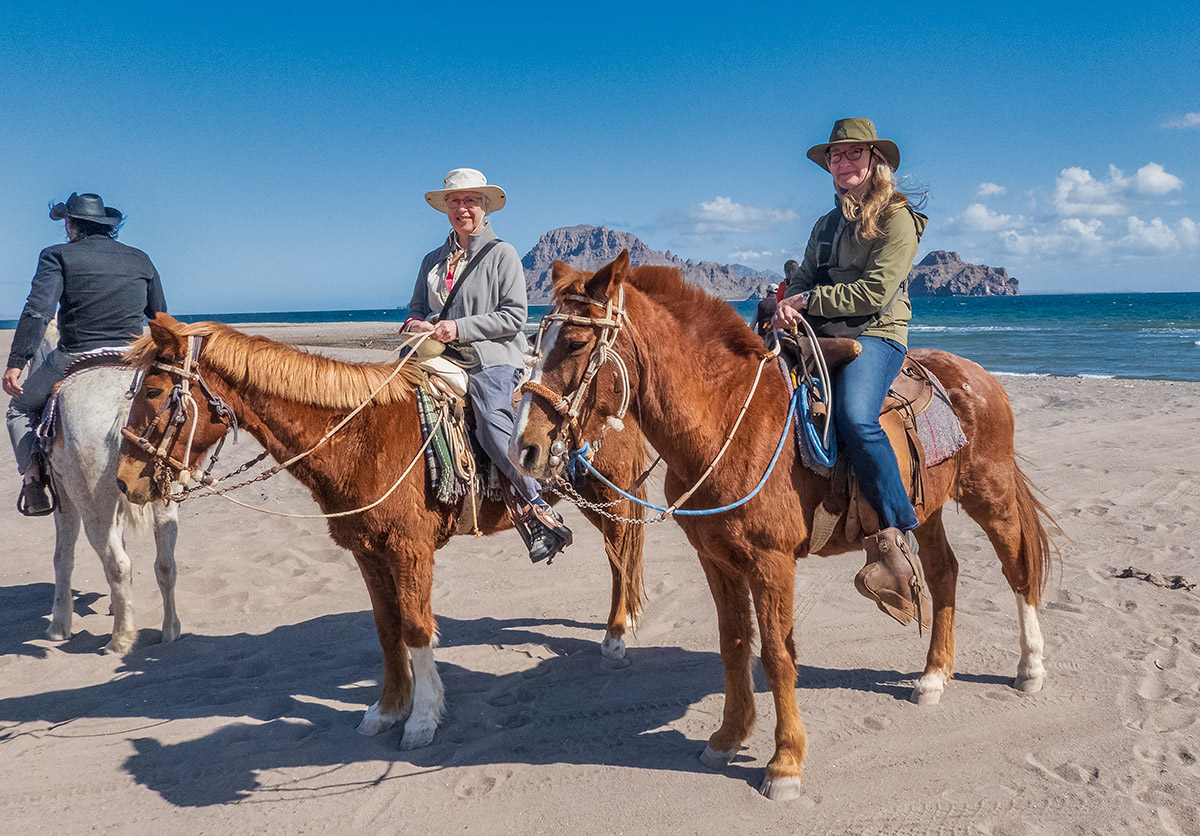
All too soon it was time to return to Ligui, following a local trail through desert and low bushes while we watched birds such as woodpeckers feeding in the trees. We let the horses find their own places in the group, and – you guessed it – Espresso was content to take up the rear, constantly needing an extra jab to keep him plodding along. Perhaps he was named after a decaffeinated espresso.
Hiking in Parque Nacional Loreto II
Just north of Ligui, much of the coastline and adjoining mountains are protected in Parque Nacional Loreto II. It was given the “II” designation because another national park closer to Loreto, near Nopoló, was designated at the same time. These parks are fairly new, formed in 2023 to protect the mostly pristine coastline and mountains, rich in biodiversity and home to endangered and endemic species. Combine this with the Loreto Bay National Marine Park, and the Loreto area has an impressive amount of protected land and sea.
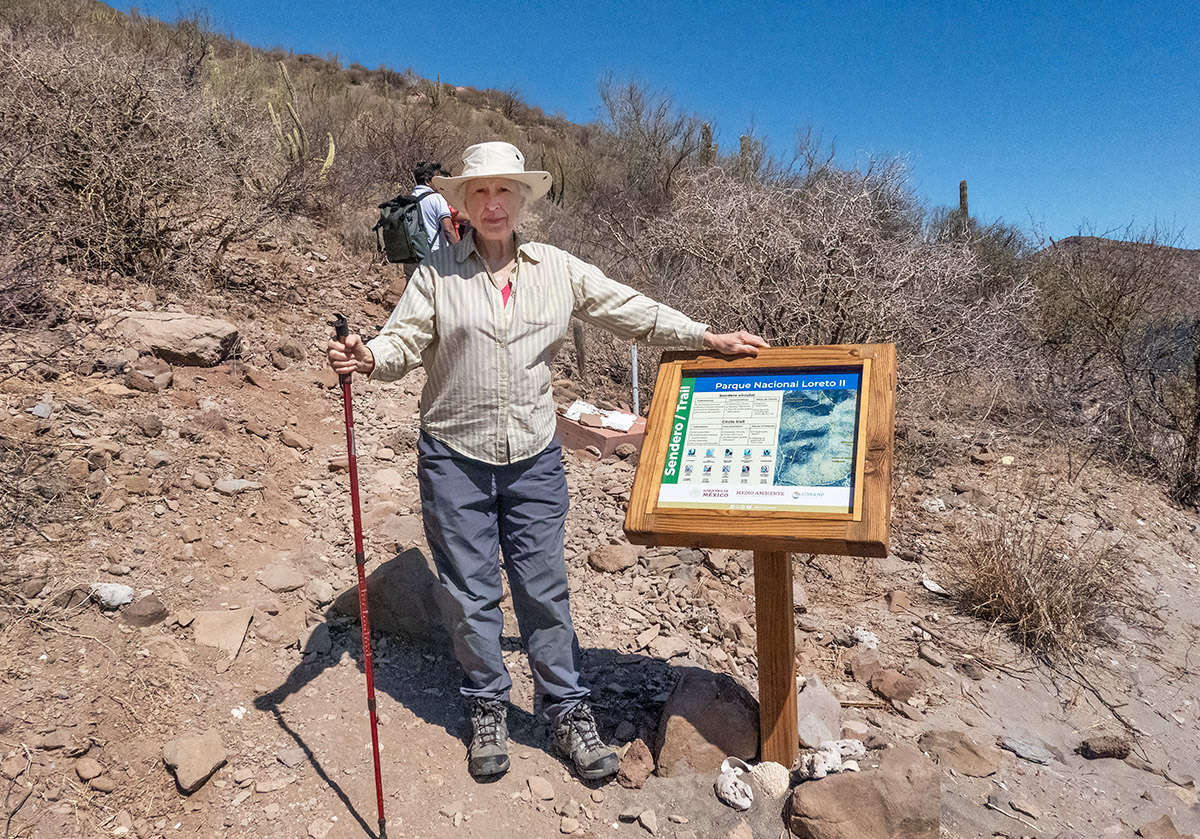
We did one of the more popular hikes in Loreto II – Cerro de la Cruz, or the Cross on the Hill, overlooking Puerto Escondido. The hike was reasonably easy, all of it over rocky terrain with plenty of loose stones, taking us from sea level on the beach where we parked to the peak at 169 metres. The desert terrain is dry at the best of times, but they hadn’t had rain for 18 months, yet desert plants somehow adapted to survive in this parched environment.

Cardon cacti were common, spread along both sides of the hills near the trail. These cacti grow very slowly, and are known for their longevity, with some living a century or more. They are important to birds such as osprey because the strong cactus arms can support their massive stick nests. In spring, the cardon flowers between March and June, their sweet blossoms opening at night to attract bats that help pollinate them. Despite their hardiness, they face several pressures, including grazing and expanding housing developments.
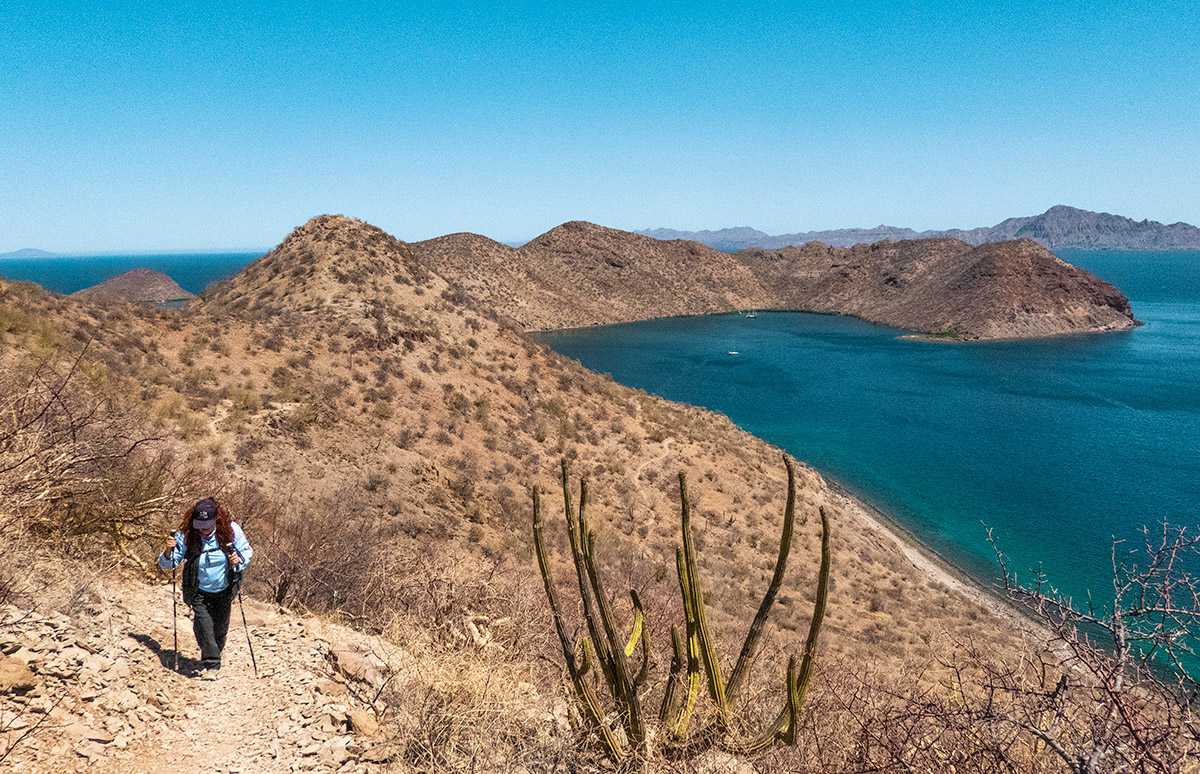
Another distinctive plant we noticed was the jumping cholla, a somewhat short plant with barbed spines covering its branches. Our guide warned us not to get too close or rub up against it. The ends of the branches detach easily from the parent plant, hooking on or “jumping” onto anything that passes by. When you brush it off, it roots and starts a new plant.
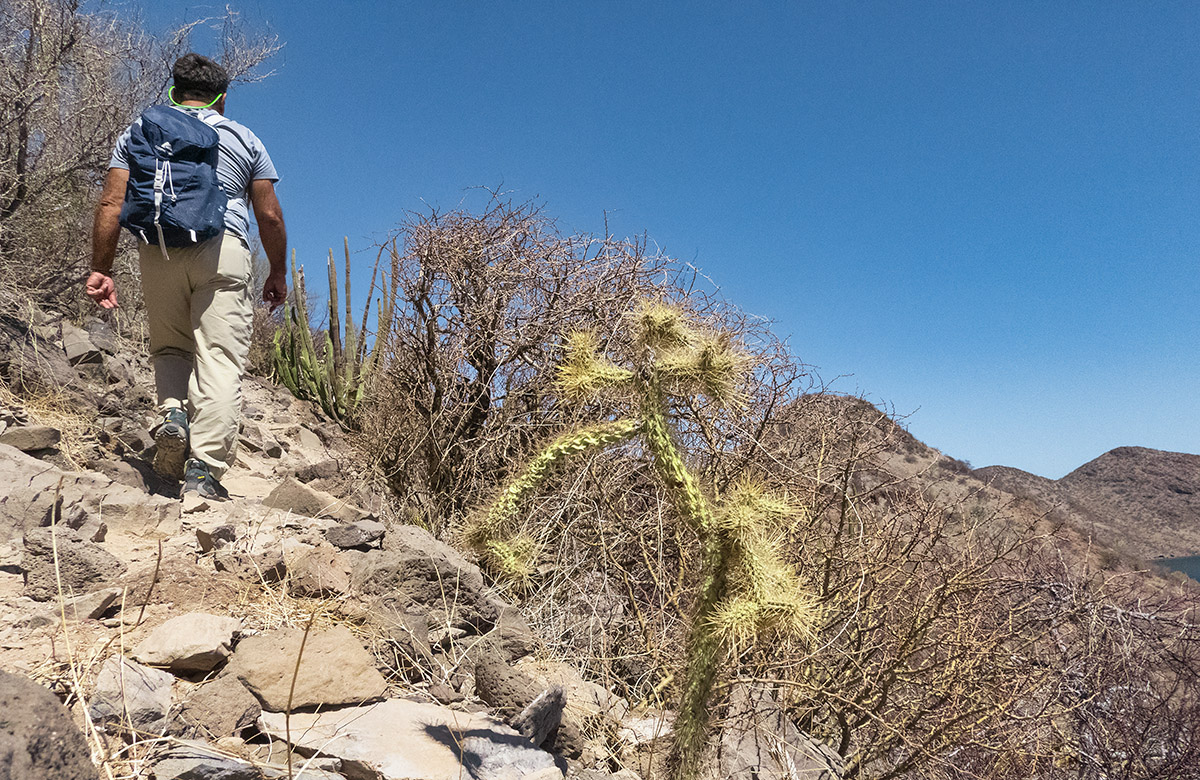
The hike got steeper as we neared the summit, where a short detour took us to the cross at the top of the hill. From here, we had glorious 360-degree views of the rugged mountains just inland, hidden coves and islands in the Gulf of California, and the sheltered marina at Puerto Escondido where many yachts are moored.

Since we were on a guided hike, we didn’t have to retrace our steps to where we had started. Instead, we followed the path down the other side. It was a short walk to the marina where the van would meet us, and where we enjoyed a well-deserved lunch on the inviting patio at Las Brisas restaurant.
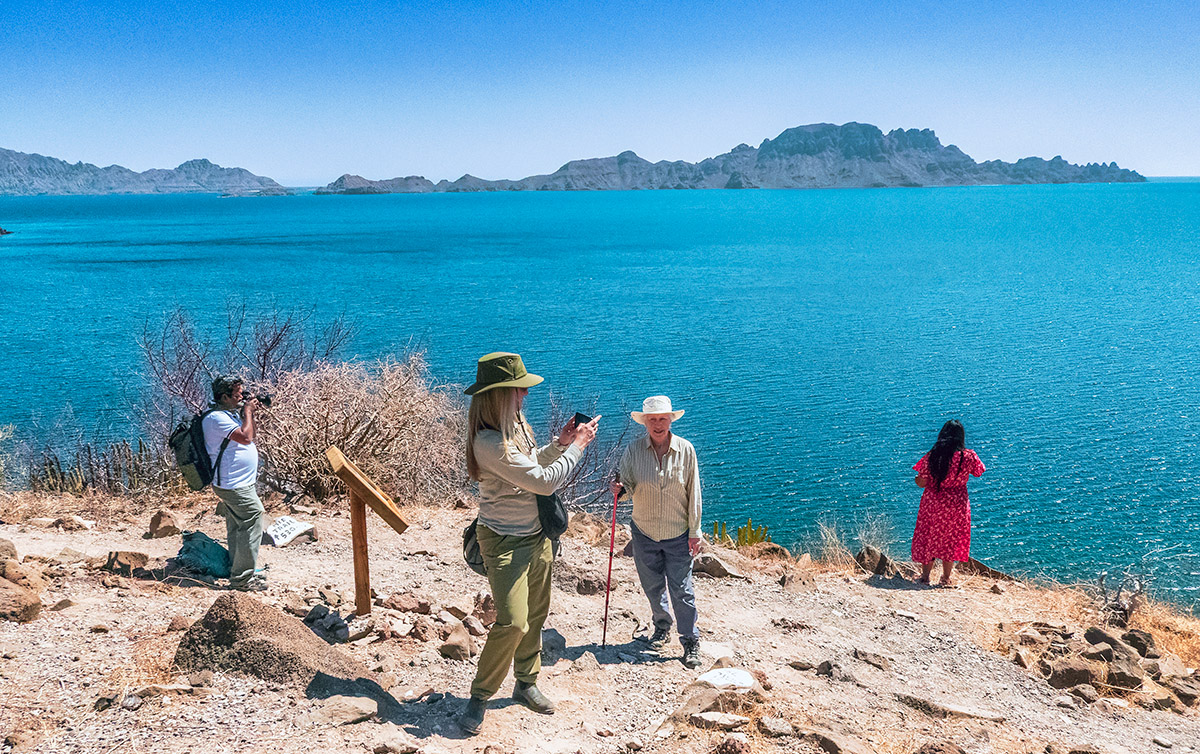
If you like your hikes on the more challenging side, there’s a wealth of options in the Loreto area, including through rugged mountainous terrains, towering cliffs, deep canyons, and dramatic rock formations.
Exploring Further Afield in the Loreto Area
Hiking and horseback riding are only some of the outdoor adventures around Loreto and Baja California Sur. See Loreto BCS Tourism for details and more ideas.
Other Photojourneys articles on Loreto and Baja California Sur that you might enjoy:
Exploring Loreto, Mexico’s Magic Town in Baja California Sur
Turquoise Waters & Tantalizing Tastes: Exploring Mexico’s Conception Bay
SUBSCRIBE to Photojourneys below
Feel free to PIN this article on Horseback Riding and Hiking near Loreto, Mexico
